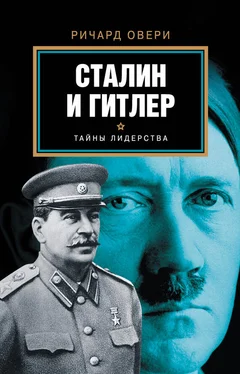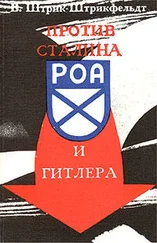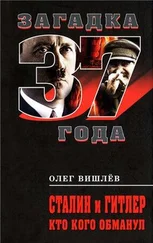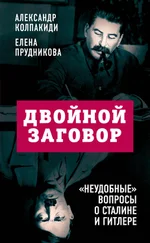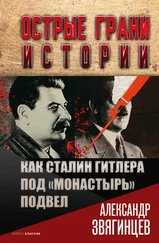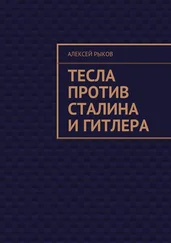Sorokin, P. The Sociology of Revolution (New York, 1967).
Soyfer, V. N. Lysenko and the Tragedy of Soviet Science (New Brunswick, NJ, 1994).
Spotts, F. Hitler and the Power of Aesthetics (London, 2002).
Stachura, P. Gregor Strasser and the Rise of Nazism (London, 1983).
Starkov, B. The Trial that was not Held’, Europe – Asia Studies, 46 (1994), pp.1297–315.
Starkov, B. Trotsky and Ryutin: from the history of the anti-Stalin resistance in the 1930s’, in T. Brotherstone and P. Dukes (eds) The
Trotsky Reappraisal (Edinburgh, 1992), pp. 70–83.
Staudinger, H. The Inner Nazi: a critical analysis of Mein Kampf (London, 1981).
Steinbach, P. and Tuchel, J. (eds) Widerstand in Deutschland 1933–1945 (Munich, 1994).
Steinberg, M. D. Proletarian Imagination: Self, Modernity and the Sacred in Russia, 1910–1925 (Ithaca, NY, 2002).
Steinweis, A. E. Art, Ideology and Economics in Nazi Germany: the Reich Chambers of Music, Theater, and the Visual Arts
(Chapel Hill, NC, 1993).
Steinweis, A. E. ‘Weimar Culture and the Rise of National Socialism: the Kampfbund für deutsche Kultur’, Central European History,
24 (1991), pp. 402–23.
Stephan, J. J. The Russian Fascists: Tragedy and Farce in Exile 1925–1945 (London, 1978).
Stephens, F. J. Hitler Youth: History, Organisation, Uniforms and Insignia (London, 1973).
Stephenson, J. The Nazi Organisation of Women (London, 1981).
Stephenson, J. ‘Propaganda, Autarky and the German Housewife’, in D. Welch (ed.) Nazi Propaganda (London, 1983),
pp. 117–42.
Stephenson, J. Women in Nazi Germany (London, 1975).
Stern, J. P. Hitler, the Führer, and the People (London, 1976).
Stettner, R. ‘Archipel GULag’: Stalins Zwangslager – Terrorinstrument und Wirtschaftsgigant (Paderborn, 1996).
Stites, R. (ed.) Culture and Entertainment in Wartime Russia (Bloomington, Ind., 1995).
Stites, R. Revolutionary Dreams: Utopian Vision and Experimental Life in the Russian Revolution (Oxford, 1989).
Stites, R. Russian Popular Culture: Entertainment and Society since 1900 (Cambridge, 1992).
Stollies, M. The Law under the Swastika: Studies in Legal History in Nazi Germany (Chicago, 1998).
Stoltzfus, M. Resistance of the Heart: Intermarriage and the Rosenstrasse Protest in Nazi Germany (New York, 1996).
Stommer, R. ‘“Da oben versinkt einem der Alltag…,” Thingstätten im Dritten Reich als Demonstration der Volksgemeinschaftsideologie’,
in D. Peukert and J. Reulecke (eds) Die Reihen fast geschlossen: Beiträge zur Geschichte des Alltags unterm
Nationalsozialismus (Wuppertal, 1981), pp. 149–74.
Stone, D. R. Hammer and Rifl e: the Militarization of the Soviet Union 1926–1933 (Lawrence, Kans., 2000).
Storr, A. (ed.) The Essential Jung: Selected Writings (London, 1983).
Strätz, H. W. ‘Die studentische Aktion wider den undeutschen Geist’, Vierteljahrshefte für Zeitgeschichte, 16 (1968),
pp. 347–72.
Straus, K. M. Factory and Community in Stalin’s Russia: The making of an industrial working class (Pittsburgh, 1997).
Streim, A. Sowjetische Gefangene in Hitlers Vernichtungskrieg: Berichte und Dokumente (Heidelberg, 1982).
Streit, C. Keine Kameraden: die Wehrmacht und die sowjetischen Kriegsgefangenen 1941–1945 (Stuttgart, 1978).
Streit, C. ‘Die sowjetischen Kriegsgefangenen in den deutschen Lagern’, in D. Dahlmann and G. Hirschfeld (eds) Lager, Zwangsarbiet,
Vertreibung und Deportation (Essen, 1999), pp. 403–14.
Sutela, P. Socialism, Planning and Optimality: a Study in Soviet Economic Thought (Helsinki, 1984).
Sutton, A. C. Western Technology and Soviet Economic Development 1930 to 1945 (Stanford, 1971).
Swayze, H. Political Control of Literature in the USSR 1946–1959 (Cambridge, Mass., 1962).
Sword, K. Deportation and Exile: Poles in the Soviet Union, 1939–48 (London, 1994).
Sword, K. (ed.) The Soviet Takeover of the Polish Eastern Provinces 1939–1941 (London, 1991).
Syring, E. Hitler: seine politische Utopie (Frankfurt am Main, 1994).
Szamuely, T. ‘The Elimination of Opposition between the Sixteenth and Seventeenth Congresses of the CPSU’, SovietStudies, 17
(1966), pp. 318–38.
Szejnmann, C.-C. Nazism in Central Germany: the Brownshirts in ‘Red’ Saxony (Oxford, 1999).
Szöllösi-Janze, M. (ed.) Science in the Third Reich (Oxford, 2001).
Szporluk, R. ‘Nationalism and communism: refl ections: Russia, Ukraine, Belarus and Poland’, Nations and Nationalism, 4 (1998),
pp. 301–20.
Tait, A. L. ‘Lunacharsky: a “Nietzschean Marxist”?’ in B. G. Rosenthal Nietzsche in Russia (Princeton, NJ, 1986), pp. 275–92.
Tarleton, R. E. ‘What Really Happened to the Stalin Line?’ Journal of Slavic Military Studies, 6 (1993), pp. 21–61.
Taylor, B. and van der Will, W. (eds) The Nazifi cation of Art: Art, Design, Music, Architecture and Film in the Third Reich
(Winchester, 1990).
Taylor, R. Film Propaganda in Soviet Russia and Nazi Germany (London, 1998).
Taylor, R. Literature and Society in Germany 1918–1945 (Brighton, 1980).
Taylor, R. The Politics of the Soviet Cinema (London, 1979).
Taylor, R. and Spring, D. (eds) Stalinism and Soviet Cinema (London, 1993).
Temin, P. ‘Soviet and Nazi economic planning in the 1930s’, Economic History Review, 44 (1991), pp. 573–93.
Thamer, H.-U. Verführung und Gewalt: Deutschland 1933–1945 (Berlin, 1986).
Theweleit, K. Male Fantasies. Male bodies: psychoanalysing the white terror (Oxford, 1989).
Thies, J. ‘Nazi Architecture – a Blueprint for World Domination: the Last Aims of Adolf Hitler’, in D.Welch (ed.) Nazi Propaganda
(London, 1983), pp. 45–64.
Thurner, E. National Socialism and Gypsies in Austria (Tuscaloosa, Ala., 1998).
Thurston, R. W. Life andTerror in Stalin’s Russia 1934–1941 (London, 1996).
Thurston, R. W. ‘Social Dimensions of Stalinist Rule: Humor and Terror in the USSR, 1935–1941’, Journal of Social History, 24
(1990/1), pp. 541–62.
Todorov, T. Facing the Extreme: Moral Life in the Concentration Camps (New York, 1996).
Todorov, T. Hope and Memory: Refl ections on the Twentieth Century (London, 2003).
Tolz, V. ‘New Information about the Deportations of Ethnic Groups in the USSR during World War 2’, in J. Garrard and C. Garrard
(eds) World War 2 and the Soviet People (London, 1993), pp. 161–79.
Tompsen, W. Khrushchev (London, 1994).
Tooze, J. A. Statistics and the German State, 1900–1945: the Making of Modern Economic Knowledge (Cambridge, 2001).
Tregub, S. The Heroic Life of Nikolai Ostrovsky (Moscow, 1964).
Tröger, A. The Creation of a Female Assembly-Line Proletariat’, in R. Bridenthal, A. Grossmann and M. Kaplan (eds) When Biology
became Destiny: Women in Weimar Germany and Nazi Germany (New York, 1984), pp. 237–70.
Tuchel, J. ‘Dimensionen des Terrors: Funktionen der Konzentrationslager in Deutschland 1933–1945’, in D. Dahlmann and G.
Hirschfeld (eds) Lager, Zwangsarbeit, Vertreibung und Deportation (Essen, 1999), pp. 371–91.
Tuchel, J. Konzentrationslager: Organisationsgeschichte und Funktion der Inspektion der Konzentrationslager’ 1934–1938
(Boppard am Rhein, 1991).
Tucker, R. Stalin as Revolutionary, 1879–1929 (New York, 1974).
Tucker, R. Stalin in Vower: the Revolution from Above, 1928–1941 (New York, 1990).
Tucker, R. (ed.) Stalinism: Essays in Historical Interpretation (New York, 1977).
Tumarkin, N. Lenin Lives! The Lenin Cult in Soviet Russia (Cambridge, Mass., 1997).
Ueberschär, G. and Bezymenski, L. A. (eds) Der deutsche Angriff auf die Sowjetunion 1941: Die Kontroverse um die
Читать дальше
Конец ознакомительного отрывка
Купить книгу
